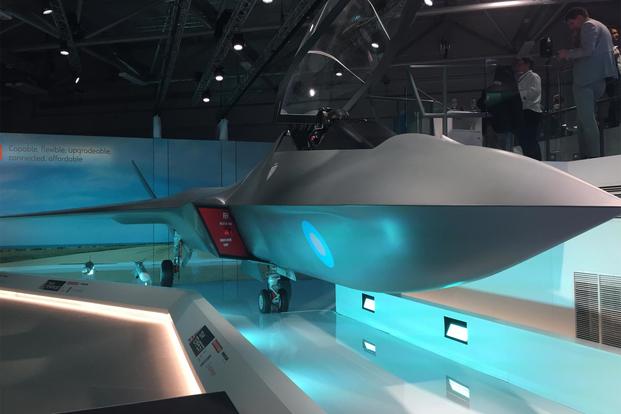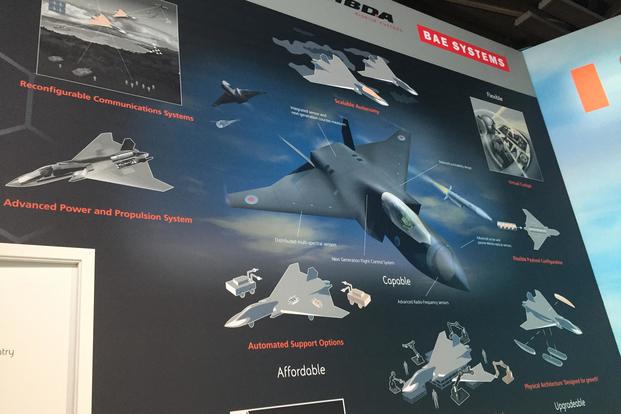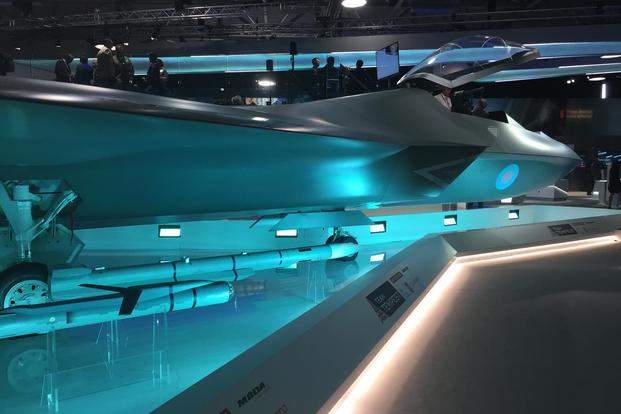FARNBOROUGH, England -- As the United Kingdom develops its next-generation fighter, the U.S. Air Force hopes the allies can promote interoperability with its own high-end fighters and airpower operations.
The Ministry of Defence on Monday debuted its next-generation fighter concept, the Tempest, along with its future combat air strategy. While details are vague on how the aircraft is intended to operate, its specific attributes and what type of aerial missions it will take on, the next-gen plane -- a joint venture between BAE Systems, Leonardo, Rolls-Royce and MBDA -- is expected to fly by 2035.
"We of course welcome competition in any venue, and we'll certainly work in developing technologies with our allies that will be complementary to our capabilities as well as their capabilities," Under Secretary of the U.S. Air Force Matt Donovan said here, alongside Will Roper, assistant secretary of the Air Force for acquisition, technology and logistics.
"Anyone that's building something that's going to be critical to an allied fight is going to be pushing the state-of-play of technology," added Roper. "So we'll look forward to discussions to hear what the U.K. is thinking of their airplane, and determining if there is a role they would like us to play, and how we use this inside a broader U.S. National Defense Strategy."
Related content:
- Air Force Wants to Invest Heavily in Next-Gen Technologies
- Air Force Creates Office to Help It Shake Up Acquisition Process
- Military.com Farnborough Airshow Coverage
The United Kingdom and U.S. are partners on the fifth-generation F-35 Joint Strike Fighter.
Since its concept debut, some considered Tempest to be a sixth-generation fighter, while critics say overall it resembles a fifth-gen fighter. While complementary to the U.K. fleet, the optionally-manned Tempest is intended to replace the Eurofighter Typhoon, which is expected to fly until at least 2040.
Roper said from an acquisition standpoint, he's hoping to speak with U.K. counterparts not just on Tempest, but multiple platforms going forward. Broadly speaking, if partners anticipate making a new concept or "plugging in" with allies on defensive capabilities, they should make them interoperable from the start -- much like the Air Force's new networked approach, he said.
"The most important thing going forward is interoperability," Donovan said. "We want to make sure they fit into the joint coalition."
Roper said potential adversaries should always be considered when thinking about next-generation air dominance with partners.
"But not just our threats, also the world of promotional technology," he added.
"We're an Air Force that's come a long way on stealth technology. We've been able to hide from the world of sensors around us, but now we live in a world where sensors are increasingly propagating because of commercial investment. So we have to weigh the pros and cons of a lot of different forms of airpower in the future," he said. "And it's probably wise of us to not do that alone."
-- Oriana Pawlyk can be reached at oriana.pawlyk@military.com. Follow her on Twitter at @Oriana0214.
















